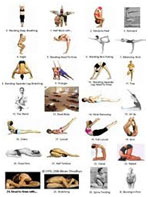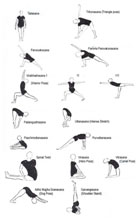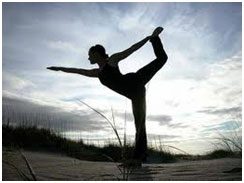- Home |
- Why With Us |
- About Us |
- Booking |
- Contact Us |
- Site Map
- Home
-
Nepal
-
Trekking
- Arun Valley with Gokyo Lakes
- Everest Base Camp Trek
- Everest- A Living Culture Exploration
- Everest Explore
- Everest Base Camp (via Thame) Trek
- Everest Base Camp with Kala Patthar
- Everest Comfort Trek
- Everest High Passes with Ama Dablam Base Camp
- Everest Mani Rimdu Festival Trek
- Everest Nagpa La Trek
- Everest with three high passes
- Gokyo Ri, Chola Pass & Chukung Ri with Kala Patthar
- Gokyo with Everest Base Camp
- Jomsom - Muktinath
- Jomsom - Muktinath
- Khayar Lake Trek
- Manaslu and Tsum Valley with Larkya La
- Upper Mustang Trek
- Manaslu High Circuit
- Manaslu, Tilicho Pass & Upper Mustang
- Annapurna Base Camp Trek
- The Annapurna Circuit Trek
- Annapurna Panorama
- Nar and Phu Valley Trekking
- Nepal Rhododendron Trek
- Royal Trek
- Saribung Trek and Expedition
- Annapurna Sanctuary Trek
- The Annapurna Sunrise Trek
- Expedition
-
Rafting
-
Peak Climbing
-
Tours
- Kathmandu-Chitwan-Jungle Tour with visit to Pokhara
- Dawn to Dusk Tour
- Historical, Natural & Cultural Tour with Camping
- Kathmandu Valley Temple Tour
- Temple - Panorama - Jungle Tour
- Taste of Nepal
- Central Nepal Tour
- Explore Nepal Tour & Trek
- Nepal Cross-country Tour
- Best of Nepal Tour & Treks
- Kathmandu valley rim Tour & Treks
- Nepal Culture Tour
- Introduction to Nepal Tour & Treks
- Nepal at a glance Tour & Treks
- Wonders of Nepal Tour & Treks
- Glimpses of Nepal Tour & Treks
- Through the Silhouette Tour & Treks
- Tent and Temple Tour
- Kathmandu-Chitwan-Pokhara Tour
- Historical, Cultural City and Jungle Tour
- Nepal Wildlife Tour
- Nepal Panorama Historical Tour
- Nepal Adventure Tour
- Nepal Pilgrimage Tour
- Ghalegaun-Ghanapokhara Homestay Tour
- Jungle Safari
- Adventure Sports
-
Trekking
- Tibet
-
Bhutan
-
India
- Yoga Tour
- About Us
-
The Great Himalayan Trail
-
Short Tours/Treks

Yoga
Listed below are some of the most popular Yoga programs which are commonly in practice these days. Please let us know which one the following Yoga interests you, and we will, in consultation with our Yoga teacher will craft the itinerary accordingly - combining elements of your preferences, with our tour and treks as well as a suitable form of meditation.
- Ananda Yoga:
Ananda Yoga practices focus on gentle postures designed to move the energy up to the brain and prepare the body for meditation. This practice also focuses on proper body alignment and controlled breathing.
- Anusara Yoga:
Anusara Yoga is a relatively new form of yoga (1997), which pairs strict principles of alignment with a playful spirit. Postures can be challenging, but the real message of Anusara is to open your heart and strive to connect with the divine in yourself and others.
- Ashtanga (or Astanga) Yoga:
 Ashtanga Yoga is the name given to the system of yoga taught by Sri K. Pattabhi Jois. This style of yoga is physically demanding as it involves synchronizing breathing with progressive and continuous series of postures-a process producing intense internal heat and a profuse, purifying sweat that detoxifies muscles and organs. The result is improved circulation, flexibility, stamina, a light and strong body, and a calm mind. Ashtanga is an athletic yoga practice and is not for beginners.
Ashtanga Yoga is the name given to the system of yoga taught by Sri K. Pattabhi Jois. This style of yoga is physically demanding as it involves synchronizing breathing with progressive and continuous series of postures-a process producing intense internal heat and a profuse, purifying sweat that detoxifies muscles and organs. The result is improved circulation, flexibility, stamina, a light and strong body, and a calm mind. Ashtanga is an athletic yoga practice and is not for beginners.
- Bikram Yoga:
Bikram Yoga is the method of yoga that is a comprehensive workout which includes all the components of fitness: muscular strength, muscular endurance, cardiovascular flexibility and weight loss. The founder, Bikram Choudhury, was a gold medal Olympic weight lifter in 1963 and is a disciple of Bishnu Ghosh, brother of Paramahansa Yogananda, (Autobiography of a Yogi). One of the unusual but most beneficial aspects of Bikram's yoga practice is the 95-105 degree temperature which promotes more flexibility, detoxification, and prevention of injuries. This is the only yoga style that specializes in using the heated environment.
of fitness: muscular strength, muscular endurance, cardiovascular flexibility and weight loss. The founder, Bikram Choudhury, was a gold medal Olympic weight lifter in 1963 and is a disciple of Bishnu Ghosh, brother of Paramahansa Yogananda, (Autobiography of a Yogi). One of the unusual but most beneficial aspects of Bikram's yoga practice is the 95-105 degree temperature which promotes more flexibility, detoxification, and prevention of injuries. This is the only yoga style that specializes in using the heated environment.
- Hatha Yoga:
Hatha Yoga is an easy-to-learn basic form of yoga that has become very popular in the United States. Hatha Yoga is the foundation of all Yoga styles. It incorporates Asanas (postures), Pranayama (regulated breathing), meditation (Dharana & Dhyana) and kundalini (Laya Yoga) into a complete system that can be used to achieve enlightenment or self-realization. It has become very popular as source of exercise and stress management. The ideal way to practice the Hatha Yoga poses (asanas) is to approach the practice session in a calm, meditative mood. Sit quietly for a few moments, then begin the series, slowly, with control and grace, being inwardly aware as the body performs the various poses selected for the practice session. Do not overdo the asanas or try to compete with others. Take it easy and enjoy.
- Integral Yoga:
This traditional type of yoga combines postures, breathing exercises, selfless service, meditation, chanting, prayer, and self-inquiry.
- ISHTA Yoga:
Developed by South African teacher Mani Finger and popularized in the States by his son Alan, ISHTA (Integral Science of Hatha and Tantric Arts) focuses on opening energy channels throughout the body with postures, visualizations, and meditation.
- Iyengar Yoga:
 Developed by yoga master B.K.S. Iyengar more than 60 years ago, promotes strength, flexibility, endurance, and balance through coordinated breathing and poses that require precise body alignment. The poses are generally held longer than in other styles of yoga. In Iyengar, you slowly move into a pose, hold it for a minute or so, and then rest for a few breaths before stretching into another. Equipment like cushions, blankets, straps, and blocks to help the less flexible also distinguishes Iyengar from other types of yoga. Although Iyengar incorporates the traditional postures, or asanas, that make up the broader category of hatha yoga, the cushions and other props revolutionized yoga by enabling everyone -- even the elderly, sick, and disabled -- to practice. Because of its slow pace, attention to detail, and use of props, Iyengar yoga can be especially good if you're recovering from an injury. Iyengar is still one of the most popular types of yoga taught today.
Developed by yoga master B.K.S. Iyengar more than 60 years ago, promotes strength, flexibility, endurance, and balance through coordinated breathing and poses that require precise body alignment. The poses are generally held longer than in other styles of yoga. In Iyengar, you slowly move into a pose, hold it for a minute or so, and then rest for a few breaths before stretching into another. Equipment like cushions, blankets, straps, and blocks to help the less flexible also distinguishes Iyengar from other types of yoga. Although Iyengar incorporates the traditional postures, or asanas, that make up the broader category of hatha yoga, the cushions and other props revolutionized yoga by enabling everyone -- even the elderly, sick, and disabled -- to practice. Because of its slow pace, attention to detail, and use of props, Iyengar yoga can be especially good if you're recovering from an injury. Iyengar is still one of the most popular types of yoga taught today.
- Jivamukti Yoga:
Developed in 1986 by Sharon Gannon and David Life, the Jivamukti Yoga method expresses the  spiritual and ethical aspects of the practice of yoga that have been disregarded or devalued in contemporary times. It is a vigorous and challenging asana form with an emphasis on scriptural study, Sanskrit chanting, vegetarianism, non-violence, meditation, devotion to God and the role that music and listening play in the practice of yoga. Life and Gannon currently operate a popular yoga studio in New York City.
spiritual and ethical aspects of the practice of yoga that have been disregarded or devalued in contemporary times. It is a vigorous and challenging asana form with an emphasis on scriptural study, Sanskrit chanting, vegetarianism, non-violence, meditation, devotion to God and the role that music and listening play in the practice of yoga. Life and Gannon currently operate a popular yoga studio in New York City.
- Kali Ray Tri Yoga:
A series of flowing, dancelike movements was developed by Kali Ray in 1980. The practice also incorporates pranayama (breathing exercises) and meditation. Kali Ray runs the Tri Yoga Center in Santa Cruz, California.
- Kripalu Yoga:
Kripalu is called the yoga of consciousness. This gentle, introspective practice urges practitioners to hold poses to explore and release emotional and spiritual blockages. Goal-oriented striving is discouraged and precise alignment is not as important as in some other traditions. There are three stages in Kripalu yoga. Stage one focuses on learning the postures and exploring your body’s abilities. Stage two involves holding the postures for an extended time, developing concentration and inner awareness. Stage three is like a meditation in motion in which the movement from one posture to another arises unconsciously and spontaneously.
- Power Yoga:
Power Yoga is essentially yoga with brawn. It's the American interpretation of ashtanga yoga, a discipline that combines  stretching, strength training, and meditative breathing. But power yoga takes ashtanga one step further. Many of the poses (also called postures or their Sanskrit name, asanas) resemble basic calisthenics -- push-ups and handstands, toe touches and side bends -- but the key to power yoga's sweat-producing, muscle-building power is the pace. Instead of pausing between poses as you would in traditional yoga, each move flows into the next, making it an intense aerobic workout.
stretching, strength training, and meditative breathing. But power yoga takes ashtanga one step further. Many of the poses (also called postures or their Sanskrit name, asanas) resemble basic calisthenics -- push-ups and handstands, toe touches and side bends -- but the key to power yoga's sweat-producing, muscle-building power is the pace. Instead of pausing between poses as you would in traditional yoga, each move flows into the next, making it an intense aerobic workout.
- Restorative Yoga:
In a restorative yoga class you'll spend long periods of time lying on blocks, blankets and yoga bolsters - passively allowing muscles to relax.
- Sivananda Yoga:
Like Integral Yoga, this traditional type of yoga combines postures, breathing, dietary restrictions, chanting, scriptural study, and meditation. The popular TV yoga teacher Lilias got her start practicing Sivananda Yoga.
- Svaroopa Yoga:
New students find this a very approachable style, often beginning in chair poses that are comfortable. Promotes healing and transformation.
- Viniyoga Yoga:
This is commonly used as a therapeutic practice for people who have suffered injuries or are recovering from surgery. It is a gentle, healing practice that is tailored to each person's body type and needs as they grow and change.
- Vinyasa:
Focuses on coordination of breath and movement and it is a very physically active form of yoga. It began with Krishnamacharya who later passed it on to Pattabhi Jois.
- White Lotus Yoga:
A modified Astana practice developed by Ganga White which is combined with breath work and meditation.

Trekking in Nepal
Expeditions In Nepal
Rafting in Nepal
Tours in Nepal
All rights reserved.



